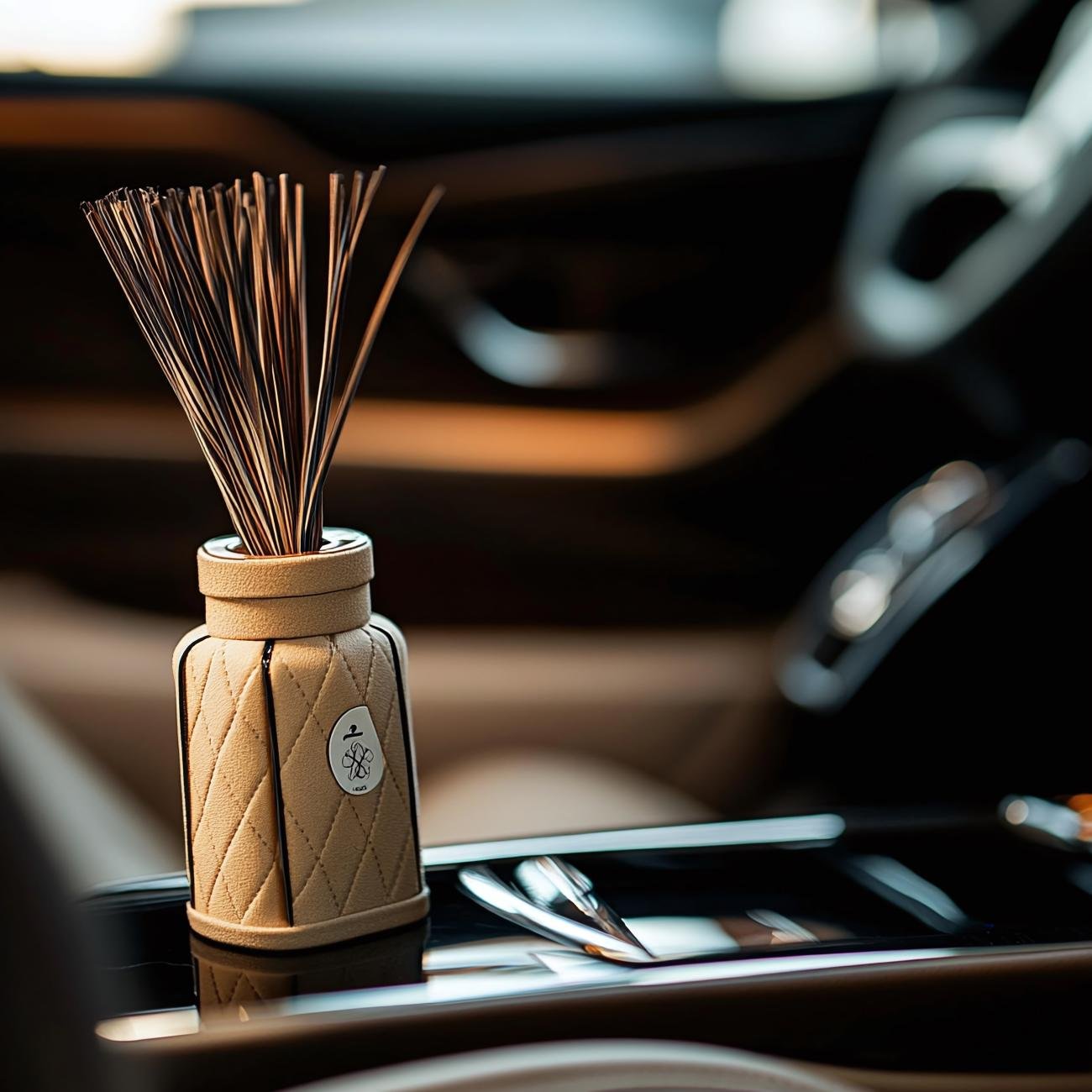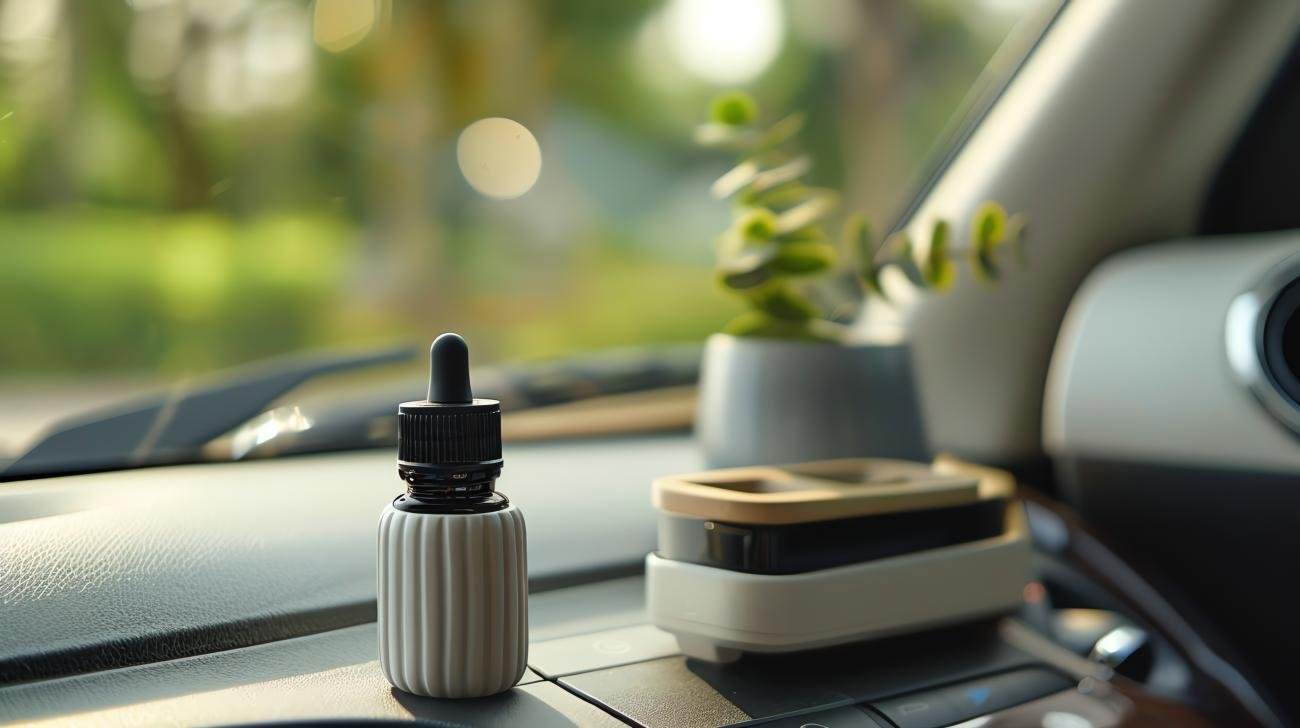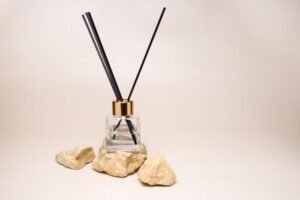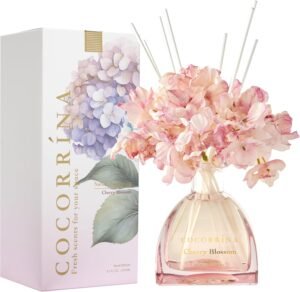Let’s face it, your car can often feel like a second home. Whether it’s the daily commute, school runs, or long road trips, we spend a significant amount of time behind the wheel. But how often do you consider the quality of the air you breathe in that confined space? As someone deeply involved in creating comfortable and fresh aromatic experiences for homes and public spaces, I’ve found that cars are often overlooked. For discerning customers like Anita, who values diversified product ranges and fast iteration, or Lisa, who seeks a complete line of high-quality aromatic products, car aromatherapy presents a huge opportunity. Let’s explore how simple yet effective strategies can transform your car into a fresh and comforting oasis, making every journey more enjoyable.
Transforming your car’s interior into a fresh and comfortable environment with aromatherapy involves selecting appropriate essential oils or blends, choosing the right diffusion device for your vehicle, and maintaining proper usage habits to ensure safety and longevity of the aromatic experience. The key is to address odors rather than mask them, utilize scents that promote well-being and alertness without causing distraction, and ensure that the aromatherapy solution is stable and practical for the car’s unique conditions, ultimately creating a more pleasant and personal commuting space.

I’ve personally spent countless hours in cars, testing prototypes of car diffusers and various essential oil blends. I’ve found that a well-designed car aromatherapy experience can alleviate road rage, combat fatigue, and even make traffic jams feel a little less agonizing. It’s not just about covering up smells; it’s about creating an atmosphere that promotes well-being. So, how can you make the air in your car fresh and comfortable?
Choosing the Right Scent: More Than Just "Smelling Good"
The first and most critical step in car aromatherapy is selecting the right fragrance. This goes beyond personal preference; it involves considering safety, mood, and potential effects on alertness.
Choosing the right scent for car aromatherapy is crucial for both comfort and safety, prioritizing essential oils and blends known for promoting alertness, reducing stress, and neutralizing odors without inducing drowsiness or distraction. Citrus oils like lemon or sweet orange are excellent for invigorating and refreshing the air, while peppermint can help with focus and reduce motion sickness. Lavender, while calming, should be used with caution, as its sedating effects are generally less suitable for driving.
%[A collage of various essential oil bottles with labels of popular car-friendly scents (Lemon, Peppermint, Rosemary, Eucalyptus, Bergamot) arranged around a car key, emphasizing scent selection.](https://co.placehold.It shows an assortment of essential oil bottles, each with clear labels indicating specific scents such as "Lemon," "Peppermint," "Rosemary," "Eucalyptus," and "Bergamot." These bottles are artfully arranged around a car key, creating a visual emphasis on the act of selecting scents for a car environment. The overall image gives a sense of conscious choice and preparation before a drive, highlighting the importance of picking the right aromatherapy notes for a car. "Choosing Car Aromatherapy Scents")
Selecting the right essential oils for your car environment is a deliberate process. After years of testing different blends, I learned that some scents are simply better suited for the road than others.
1. Scents for Alertness and Focus 🧠
- Lemon Essential Oil: Known for its uplifting and energizing properties. It helps to reduce stress and improve mood, making your commute feel brighter. It is a powerful odor neutralizer.
- Peppermint Essential Oil: Highly stimulating and refreshing. It can help enhance alertness, improve concentration, and even alleviate motion sickness or fatigue during long drives.
- Rosemary Essential Oil: Promotes alertness and cognitive performance. It can be particularly useful during early morning commutes to help sharpen your mind.
- Eucalyptus Essential Oil: Invigorating and helps to clear the airways. It can be beneficial when you are feeling sluggish or congested, providing a refreshing burst.
- Ginger Essential Oil: Known for its properties to help ease nausea and motion sickness, while also offering a warming and uplifting aroma.
2. Scents for Reducing Stress and Road Rage 🧘
- Bergamot Essential Oil: A citrus oil that is uplifting and stress-reducing without being overly stimulating. It promotes a sense of well-being.
- Grapefruit Essential Oil: Energizing and mood-boosting, helping to combat feelings of irritation or frustration sometimes associated with traffic.
- Sweet Orange Essential Oil: Cheerful and mood-enhancing, it helps to create a positive atmosphere in the car.
3. Odor Neutralizers (Beyond Covering Up) 🌬️
- Tea Tree Essential Oil: Has strong antibacterial properties, making it excellent for tackling stubborn odors from spills, food, or gym bags.
- Purifying Blends: Consider blends specifically designed for odor elimination, often containing a mix of citrus and invigorating notes. These blends do not just mask smells but aim to neutralize them.
4. Scents to Use with Caution (or Avoid) ⚠️
- Lavender Essential Oil: While fantastic for relaxation and sleep, its sedating properties make it generally unsuitable for driving, especially during long journeys or when needing to remain alert. If you use it, ensure it is a minimal amount and only for short, low-stakes drives.
- Ylang-Ylang Essential Oil: Very relaxing, but can be overly calming or even induce drowsiness in higher concentrations.
Always remember that less is often more with essential oils. A few drops are usually enough to create a pleasant and fresh atmosphere without overwhelming the senses.
Choosing the Right Car Diffuser: Practicality Meets Performance
Once you have your essential oils, you need a safe and effective way to disperse them in the car. Not all diffusers are created equal, and the confined space of a vehicle requires specific considerations.
Selecting the optimal car diffuser involves considering power source (USB, cigarette lighter), diffusion method (nebulizing, fan, vent clips), and design, prioritizing models that operate quietly, safely, and efficiently within the car’s confined and often temperature-fluctuating environment. USB-powered nebulizing diffusers offer potent, waterless diffusion, while simple vent clips provide convenience for passive scent release. The best choice balances scent coverage, ease of use, and compatibility with your vehicle, ensuring consistent and safe aromatherapy delivery.

We at ENO have invested significantly in R&D for flameless diffusers, including those for car environments. The car presents unique challenges: temperature fluctuations, vibrations, and the need for a stable, leak-proof solution.
1. USB-Powered Nebulizing Diffusers 💨
- How They Work: These diffusers use air pressure to turn essential oil directly into a fine mist, without water or heat. They are highly efficient and produce a strong, pure aroma.
- Advantages: Excellent scent throw, waterless (no spills), often compact, and many have timers or intermittent settings. They connect to your car’s USB port, making them convenient.
- Considerations: Can be pricier, and some models might be a bit noisy. Requires regular cleaning to prevent oil buildup.
- Best For: Users who want a potent and quick aromatic impact, and those who prefer pure essential oil diffusion without added water.
2. Mini Fan Diffusers 🌬️
- How They Work: Essential oil is dropped onto a small pad or wick, and a tiny fan blows air over it, dispersing the scent.
- Advantages: Waterless, usually quiet, relatively inexpensive, and easy to use.
- Considerations: Scent throw can be milder than nebulizing diffusers, and pads need to be replaced periodically.
- Best For: Those who prefer a more subtle aroma and a simple, fuss-free operation.
3. Vent Clip Diffusers (Passive or Pad-Based) 🧲
- How They Work: These are usually small clips with a felt pad or ceramic disc where you drop essential oil. They attach to your car’s air vents, and the airflow disperses the scent.
- Advantages: Very compact, no power needed, highly affordable, and extremely simple to use.
- Considerations: Scent intensity depends heavily on the car’s fan speed and is less consistent. The aroma fades relatively quickly. The "strength" of the scent can sometimes be tied to the temperature of the air, not always ideal.
- Best For: Budget-conscious users, those who prefer very light fragrance, or for trying out new scents temporarily.
4. Hanging Air Fresheners (with Essential Oils) 🌲
- How They Work: These are typically felt or wooden shapes that absorb essential oil and passively release it.
- Advantages: Very simple, decorative, and require no power.
- Considerations: Limited scent throw and longevity. Scent fades quickly.
- Best For: Very subtle background scent, decorative purposes, or as a temporary solution.
Avoid methods that use heat or an open flame, as these are unsafe in a car environment. Always ensure your chosen diffuser is stable and does not obstruct your view or interfere with safe driving.
Best Practices and Maintenance: Ensuring a Fresh and Safe Ride
Once you have your essential oils and diffuser, a few best practices will ensure your car aromatherapy experience is consistently fresh, effective, and safe.
Effective car aromatherapy requires regular maintenance of the diffuser and consistent attention to ventilation, preventing essential oil buildup, and ensuring that oils are stored correctly to preserve their integrity. It also involves starting with minimal drops of oil and gradually increasing to find the desired intensity, ensuring all passengers are comfortable with the chosen aroma, and avoiding oil spills to protect car surfaces from potential damage, all contributing to a safe, pleasant, and long-lasting aromatic environment.

After all the product testing and customer feedback, I have seen common mistakes that people make. Following these simple steps will make a big difference in how well your car aromatherapy works and how long your products last.
1. Start Small and Adjust 💧
- Less is More: Begin with just 1-2 drops of essential oil in your diffuser. The car is a small, enclosed space, and a little goes a long way.
- Gauge Reactions: Pay attention to how you and any passengers react to the scent. Some people are more sensitive than others. You can always add more drops if the scent is too subtle.
2. Ensure Proper Ventilation 💨
- Circulate Air: Even with a diffuser, it is important to occasionally open your windows or use your car’s ventilation system to bring in fresh air. This prevents essential oil buildup and keeps the air from becoming stale.
- After Scenting: After a strong scenting session, allow the car to air out before parking and leaving it for extended periods.
3. Regular Cleaning of Diffusers 🧹
- Prevent Buildup: Essential oils, especially citrus oils, can leave a residue. Clean your diffuser regularly (according to the manufacturer’s instructions) to prevent buildup and ensure optimal performance. This is especially true for nebulizing diffusers.
- Prolong Lifespan: A clean diffuser lasts longer and disperses scents more effectively.
4. Store Essential Oils Correctly 🌡️
- Cool, Dark Place: Do not leave essential oil bottles in direct sunlight or extreme temperatures in your car, as this can degrade their quality and therapeutic properties. Store them in a cool, dark place, ideally back home.
- Air-Tight Containers: Always keep the caps tightly sealed to prevent evaporation and oxidation.
5. Consider All Passengers 👨👩👧👦
- Passenger Preferences: If you frequently drive with others, be mindful of their scent preferences and any sensitivities. Discuss openly before running a new strong scent.
- Children and Pets: Be extra cautious with children and pets. Some essential oils are not suitable for them. Always research safety guidelines for specific oils before using them around vulnerable individuals.
6. Avoid Direct Contact ⚠️
- Protect Surfaces: Essential oils can damage or strip certain car surfaces (plastics, leather, paint). If you spill any oil, wipe it up immediately and thoroughly. Always place your diffuser on a protective mat or designated holder if there’s any chance of leakage.
By following these tips, you can transform your car into a truly fresh and comforting sanctuary. For our clients seeking complete solutions, car aromatherapy is an exciting extension of home fragrancing. It demonstrates how intentional use of scent can enhance everyday experiences, bringing the comfort of home right into your daily commute.





